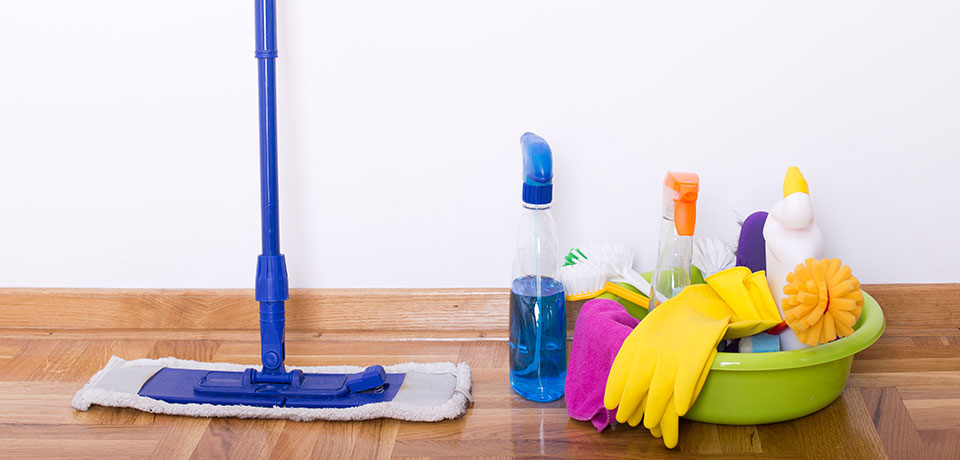You can’t stop walls from attracting dirt, but you can preserve their newly painted beauty and extend the life of paint with a few good cleaning habits.
Materials Checklist
- Vacuum cleaner with dust brush attachment
- Tack cloth/cheesecloth
- Wash bucket
- Mild household cleaner
- Grease-cutting dishwashing soap
- Baking soda
- Cloth rags
- Touch-up paint
- Plastic mixing container
- Mini paint roller and roller cover
- 2-inch or 21⁄2-inch angled bristle brush

Dusting
Regardless of paint type or sheen, regular dusting is in order. So before you do any washing, run the dust brush attachment of your vacuum over ceilings and walls, and wipe your walls down with a tack cloth or cheesecloth.
General Washing
Wait at least two weeks after painting before using any water or cleaner on your walls. Typically, it’s best to use a soft cloth or sponge with mild, soapy water.
Wipe by applying gentle pressure in a circular motion. Rinse with a clean, damp cloth afterward to remove any leftover cleaner. Too much water can ruin your paint finish, so remember to thoroughly wring out your cloth.
Spot Cleaning
For spot cleaning a scuffmark or stain, try mixing a paste of baking soda and water. Gently rub your solution over the problem area, and then rinse with a sponge. Dry with a soft cloth.
For hard-to-remove stains like grease splatters on kitchen walls, try a grease-cutting dishwashing soap mixed in warm water. Follow label instructions to make sure the cleaner won’t harm your paint finish.
Touch-ups
Follow these guidelines for nicks or scrapes in your walls that require touch-up painting:
- If possible, use paint from the original can. If you need to buy more, make sure it’s the same colour and the same sheen.
- If you’re touching up walls where the paint was originally applied with a roller, use a small trim roller. If the paint was originally brushed on, use a brush.
- Apply a small amount of your touch-up paint and gently roll or feather-brush the area.
Quick Tip: It’s always a good idea to test your cleaning solution and technique to make sure it doesn’t damage your paint finish. Pick an inconspicuous spot on your wall to perform your test. If the paint still looks bright and there are no watermarks left after drying, you’re good to go.








